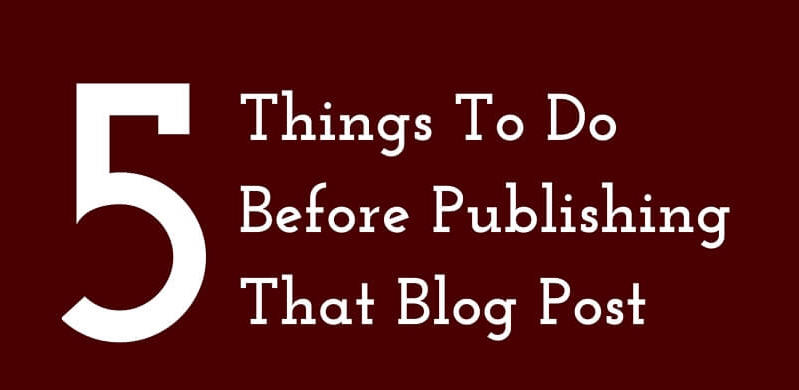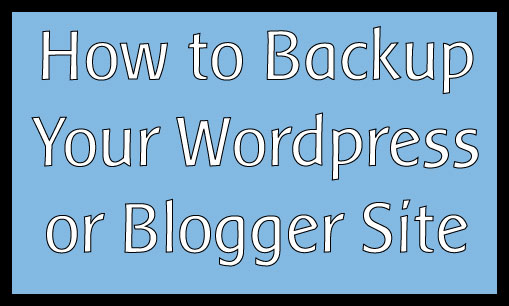4 SEO Checks Every Site Needs To Do Today

SEO has long been a buzz word in the internet marketing world, and it’s safe to say it’s not going away any time soon. In fact, SEO is probably at the height of its importance, especially with more people utilizing their smartphones and smart home devices to find things they want and need.
While not everyone is an SEO guru or ninja, there are some basics that many bloggers and website owners are still missing, which is causing them issues when it comes to their searchability. Here are 4 SEO checks that you need to do on your site as soon as you finish reading this post.
SEO Check #1: Check Your Links
Links have always been, and probably will always be, important, especially for blogs. When you’re referencing something, you should link to supporting evidence and material. However, for those of us who have been on the web for a mighty long time, think about all the places you linked to a long time ago. What have they done since then?

Well, for starters, we have to realize that many websites go belly-up within a year’s time. Whether the site shut down for business purposes, someone forgot to renew their domain, or they changed the URL and didn’t notify you (or Google for that matter), it’s super frustrating to be reading content, wanting to learn more, but you click on a dead link.
If you’re on WordPress, there’s an awesome plugin called, well, Broken Link Checker. This plugin notifies you when links aren’t working any more, and you can either edit them (if you have an updated link) or remove them completely. We use Broken Link Checker here on Awesomely Techie!
SEO Check #2: Get Acquainted with Google Webmaster Tools
Google Webmaster Tools is probably one of the first things you should set up when you have a new website or new blog. It’s a great place to not only be able to claim your website, but also monitor your site’s search performance. Google Webmaster Tools will tell you if something is wrong with your site (including if it’s been hacked), if links are broken internally, and it’s the first place I go when I want my site indexed correctly.

Submitting a sitemap to Google Webmaster Tools tells Google from jump, “these are the pages on my website”. No more wondering when they’re going to index you, or waiting around for the spiders. Your sitemap does it for you. Also, if there are pages you don’t want indexed on your site, you should make sure they’re put into your robots.txt file. This will allow humans to go to the page, but will discourage search engines for listing it (such as your lead magnets or if you’re starting a brand new site but it’s not ready yet).
Related: Google Webmaster Tools: Why You Need It and How to Set It Up
SEO Check #3: Optimize for Search Engines and Humans
When people became more aware of what SEO was and did, spammers came out of the woodwork. People were trying to game the system with strategies like keyword stuffing. There are also some people who pretend search engines aren’t a thing at all, and only make sure their website has a great user experience. The problem is: SEO is about both. You want to provide a great user experience, but you also want your content to be found by people who are looking for it, and just don’t know about you yet.

Photo via icloudmanila.com
So what should you do? The basics! On-site optimization is still very important. Especially for bloggers, you want to make sure all of your content includes:
Meta title (the title in your browser tab and the first line in search engine results)
Your meta title should be relevant to what people will find on the page, branded to your website (if necessary), and the right length so that the whole thing shows in SERPs (search engine result pages).
Meta description (the 1-2 line description in search engine results)
Meta descriptions aren’t as important anymore in SEO when it comes to how they rank, but this is a great place to optimize. I, personally, read a meta description before clicking on a link, because this usually tells me upfront if the content is worth my time or not. In the size of a tweet, write out what people will find when they click on your link. A short 1-2 sentence description that includes your major topic.

H1 Tags
Most blogging and website software automatically makes your page or blog post title into the H1 tag. If that’s the case, do not use another H1. The H1 tag is reserved for the HBIC in your content. It’s the main focus of the page. Any further headings should go down the line: H2, H3, H4, H5, and H6.
Alt Tags
You know all those glorious photos you uploaded or memes and gifs you used in your blog post? Yeah, not everyone is looking for content using the regular search. Alt tags were initially created for people who were visually impaired to be able to know what graphics were included in the content. However, alt tags are also a great way to find specific images. For instance, if someone is looking for a Reclaiming My Time t-shirt, you’re less likely to find one that does not have that information in the alt tag. Every picture should have one!
Related: 5 Things To Do Before You Publish a Blog Post
SEO Check #4: Check Your Page Speed
I always ask people if they remember the website Launch.com. It was Yahoo’s website where you could watch music videos online. I spent a whole summer on that site watching videos. But you know what killed the experience on a regular basis? Buffering. I don’t miss that at all.
Kids today will never understand the horror of having to wait minutes for a web page to load. And forget about large media files like music videos. The funny thing is, it’s 2017 and there are still so many websites out here that take forever to load. We are in the day and age of instant gratification. You can’t afford to not have a fast loading website.

P.S. We miss you President Obama
First, you’ll want to see where your site stands. Run your site through the Google Pagespeed Tool, and get your results. More than likely, your score will be lower if you have a bunch of ill-sized images (bigger is not always better), a gang of lines of code, and just too many resources for someone’s browser to pull up new every single time.
Once you get those results, you’ll want to optimize the size of the images (usually it’s the size that’s a problem, not necessarily the image dimensions), look into a caching program for your site, and get rid of all the flashy effects. Sometimes you have to sacrifice “cool effects” for page speed efficiency.
There are so many more things that go into SEO and how your website compares to others. However, you need to run straight to your site after this sentence, and tend to the ones we just mentioned.





